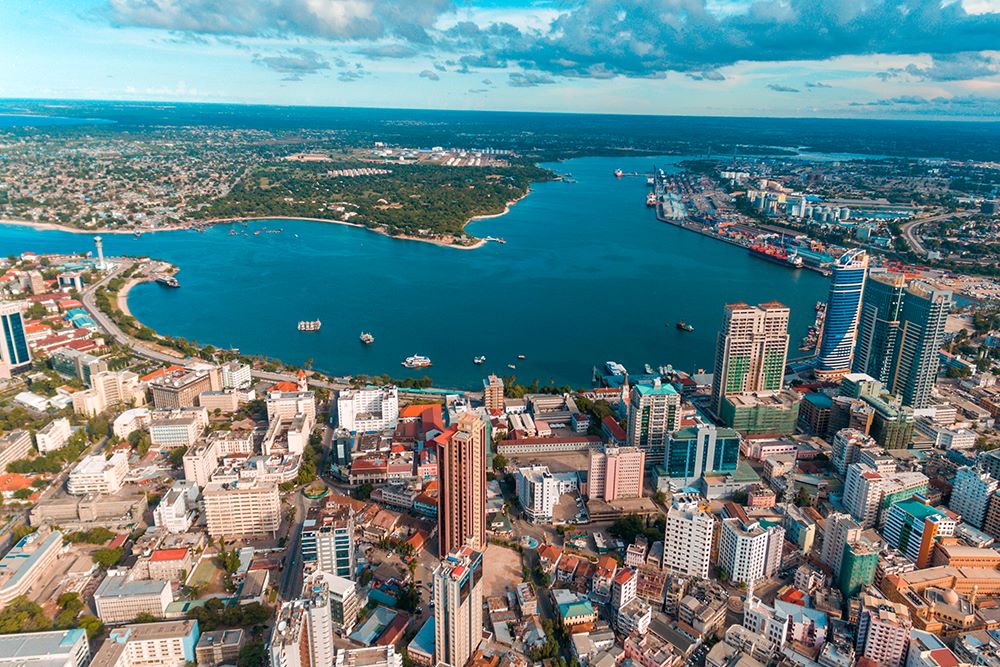Tanzania is experiencing an unprecedented surge in Foreign Direct Investment (FDI), positioning itself as East Africa’s premier investment hub. With a strong policy and infrastructure reform agenda, Tanzania is not only attracting capital but also creating jobs, transferring technology, and reducing poverty in line with its Vision 2050 of achieving a USD 1 trillion economy.
Key Trends and Performance (2023–Q3 2024/25)
- FDI Growth: FDI increased from USD 1.3–1.6 billion in 2023 to USD 6.56 billion in 2024, representing a more than 400% jump. In Q3 of 2024/25 alone, Tanzania attracted USD 1.36 billion.
- Projects & Jobs: In 2024, 901 projects were registered with a total capital of USD 9.31 billion, creating 212,293 jobs, the highest since 1991. In Q3 2024/25 alone, 24,444 jobs were created.
- GDP Growth: FDI-driven growth led to a GDP increase from 5.3% in 2023 to 5.5% in 2024, with a projection of 8% by 2030.
Main FDI Sectors
- Manufacturing – Led all sectors with 377 projects valued at USD 3.1 billion in 2023 alone.
- Transport & Infrastructure – Contributed over USD 1.2 billion.
- Agriculture – Projected to attract USD 2 billion in agro-processing FDI by 2030.
- Renewable Energy – With USD 3 billion projected by 2030, including strategic projects like the Julius Nyerere Hydropower Plant.
- Real Estate – Driven by policy changes allowing 99-year leases, it attracted USD 185.54 million in Q3 2024/25 from UAE investors.
Policy and Institutional Reforms
- TISEZA Act 2025: Merged TIC and EPZA, introduced a USD 50 million threshold for strategic projects, expedited permits, and established a national land bank.
- National Land Policy 2023: Enabled long-term lease access to land for foreign investors.
- Tanzania Electronic Investment Window (TeIW): Reduced investment registration times from 60 to 30 days.
- One Stop Facilitation Centre (PISC): Supports 80% of investors, easing FDI logistics.
Challenges Still to Address
- Infrastructure Gaps: Only 45% of Tanzanians had electricity access in 2023, hindering scalability of SEZs.
- Land Disputes: Affect around 20% of investment projects, especially in rural zones.
- Bureaucratic Inefficiencies: 15% of FDI projects experienced delays due to poor inter-ministerial coordination.
- Foreign Exchange Shortages and regional disparities persist, particularly in Nyasa Zone.
2025–2030 Strategic Goals
- USD 15 billion in annual FDI by 2030.
- 1 million jobs created by 2030.
- USD 5 billion in infrastructure investment: 20,000 km of roads and 10,000 MW energy capacity.
- 50% of FDI projects to be joint ventures.
- 95% of all FDI applications processed digitally via TeIW.
- USD 1 billion directed to underserved regions like Nyasa Zone.
Inclusive and Sustainable Growth
Programs like Vikapu Bomba (training 5,000 women in 2024 and targeting 50,000 by 2030) and SEZs like Kibaha Textile Park (projected 38,400 jobs) emphasize inclusive development. FDI also aligns with SDG 8 (Decent Work) and SDG 13 (Climate Action) by promoting green energy and equitable employment.
Conclusion
Tanzania’s FDI trajectory showcases how robust policy, sectoral strategy, and institutional reform can unlock transformative economic growth. By addressing remaining gaps and promoting equity, Tanzania is on course to become a regional economic powerhouse by 2030.
